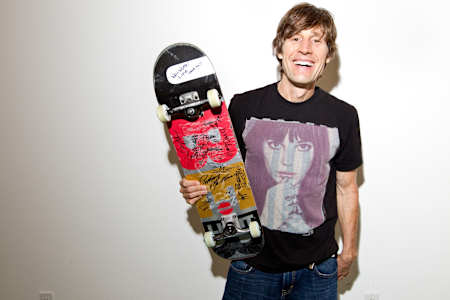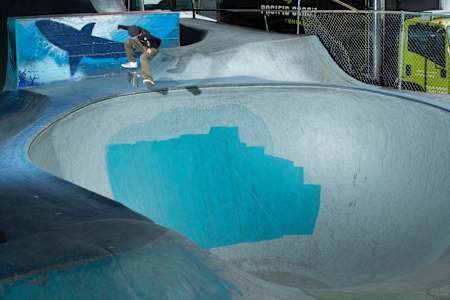Skateboarding

Skateboarding
15 interesting skateboarding facts
How many skateparks are in the U.S.?
Skateboarding was started in the 1950s by surfers who wanted the sensation of riding waves on dry land. Since then, it’s evolved from a casual pastime to a challenging feat of athleticism. In 2020, skateboarding finally earned the recognition it deserves as an Olympic sport.
So how did it get there? Below we take a closer look at 15 interesting skateboarding facts.
01
15 Interesting Skateboarding Facts
Skateboards evolved from wooden crates
While the exact origins of the skateboard are unknown, the earliest versions of the board were roller skate wheels glued to wooden crates to ride downhills. At first, they used the whole box so that you could hold onto the top as a handlebar. Eventually, it evolved to just the rudimentary beginnings of the wooden plank and wheels combination we know today.
Skateboarding was initially called "sidewalk surfing"
Surfers realized that they could use their makeshift boards to practice their moves when there weren't any waves. They would find concrete banks that mimicked the shape of a wave. This is why skateboarding was originally called sidewalk surfing and carving. In fact, doing big surf-style turns was the primary type of trick performed in the '60s.
Want to feel that skater vibe? Check out pro skater's Zion Wright's essential skating tunes on Spotify:
Skateboarding was initially barefoot
Because of skateboarding's link to surfing, it was initially practiced barefoot, like surfing. One of the first ways to make the skateboard jump (now called an "ollie") was to wrap your toes around the board's edge for grip.
Skateboarding has 85 million participants worldwide
Skateboarding is really a U.S. sport, but skateboard culture is exploding worldwide. More than half of all U.S. skaters live in California, and more than 75% are under 18. With these numbers, it is the 6th most popular sport globally.
The wheels revolutionized the sport
The original skateboards used clay wheels, which were very heavy and not durable. They were not suited for the types of high-performance tricks we’re accustomed to seeing today. Eventually, they evolved to steel, but it wasn't until the invention of polyurethane in the 1970s that the wheels we know today were developed. Polyurethane wheels are lighter, more durable, and give more traction at high speeds.
The first skate park was built in 1965
In 1965, the first skatepark was built in Tucson, Arizona. Named "Surf City," it had a bowl set-up just like a modern park. Then, in 1976 skateparks started to open up all over. California opened one in 1976 in Carlsbad, and there was another the same year in Australia. The oldest privately owned skatepark is in Jacksonville, Florida, Kona Skatepark opened in 1977 and is still running today.
The ollie was invented by Alan "Ollie" Gelfand
Alan “Ollie” Gelfand was the first to do a no-handed air in 1978, by slightly lifting the nose of the skateboard. He was an early pro skateboarder from Florida who moved to California to pursue his career. While training at the Skateboard USA park in Hollywood, he developed a new way to air without using his hands to keep the board attached to his feet. The skateboard media publicized it and called it the “ollie.” Pretty soon after, it caught on among vertical and street skaters and transformed the sport.
Rodney Mullen invented most flip and spin tricks
Rodney Mullen is known as the godfather of skateboarding because he was one of the first "flatground" skateboarders. He was just an average kid from Florida who became obsessed with skateboarding. He saw what Alan Gelfand had done in a bowl and applied that to land the first-ever flat ground ollie. Flat ground is the foundation of "street style" skateboarding, which is done around the city rather than in a skatepark. Rodney Mullen invented most of the basic variations of current flat ground tricks, such as the pop shuvit, kickflip, heelflip, and tre flip. He practiced his tricks outside of the skatepark.
Empty swimming pools inspired modern skate park design
When a massive drought hit Southern California in the early 1970s, homeowners drained their pools to conserve water. Skateboarders soon figured out that skating in the bowl-shaped part of a pool was a lot like surfing big waves, and more fun than skating on any hill or embankment. They went in search of bigger and better pools to practice “carving waves,” and the first skate parks were designed to mimic those empty swimming pools.
The X Games started with a focus on skateboarding
The X Games, started in 1995, is an extreme sports competition created to capture the attention of a generation disinterested in traditional sports. Skateboarding was a significant feature of the original X Games. It successfully attracted the attention of passionate action sports enthusiasts and is now one of the world's biggest sports competitions.
In 1999 Tony Hawk landed the 900
Tony Hawk is widely regarded as the G.O.A.T. (greatest of all time) of skateboarding. He’s not only been a dominant force for years, but he has also advanced the sport in competitive realms. He was the first skater to ever land a 900, which is 2 and a half complete rotations. This was widely believed to be physically impossible on a skateboard. It opened the door for big-spin tricks we see on skateboards today. He can still land one at 48!
The biggest stair set ever ollied was a 25 stair
In street skateboarding, one of the biggest records was set by Aaron "Jaws" Homoki. He ollied a set of 25 stairs. This stair set is nicknamed “The Lyon'' and was first attempted by Ali Boulala in 2003. To better understand just how impressive this is, it’s over 14 feet high and 23 feet long. In this interview with Red Bull, Jaws talks about how he became the guy who does mind-blowingly big ollies.
Skateboarding is a multi-billion dollar industry
The global skateboarding market is now valued at over $2 billion. The rise of competitive skateboarding around the world, the addition of the sport to the Olympics, the pandemic, and social media like SkateTok have helped grow the sport to record levels.
There are over 3,100 skateparks in the U.S.
Although skateboarding is expanding globally, most skateboarders are still in the U.S., where the sport was created. As a result, many municipalities have built skateboards in their communities. There are now over 3,100 parks in the U.S. alone.
Skateboarding was introduced to the Olympics in 2020
The Olympics are a significant milestone in any sport. However, there is still much debate over whether or not skateboarding is a sport or more akin to an art form. So when it was announced that skateboarding would be added to the Olympics, the reactions were mixed. On one hand, it finally validated skateboarders' athleticism and dedication to their craft. On the other hand, skaters were concerned that it would ruin the unique counter-cultural qualities of the sport. Read more about some of our favorite Olympic skateboarders like Leticia Bufoni, Jagger Eaton, and Zion Wright.













